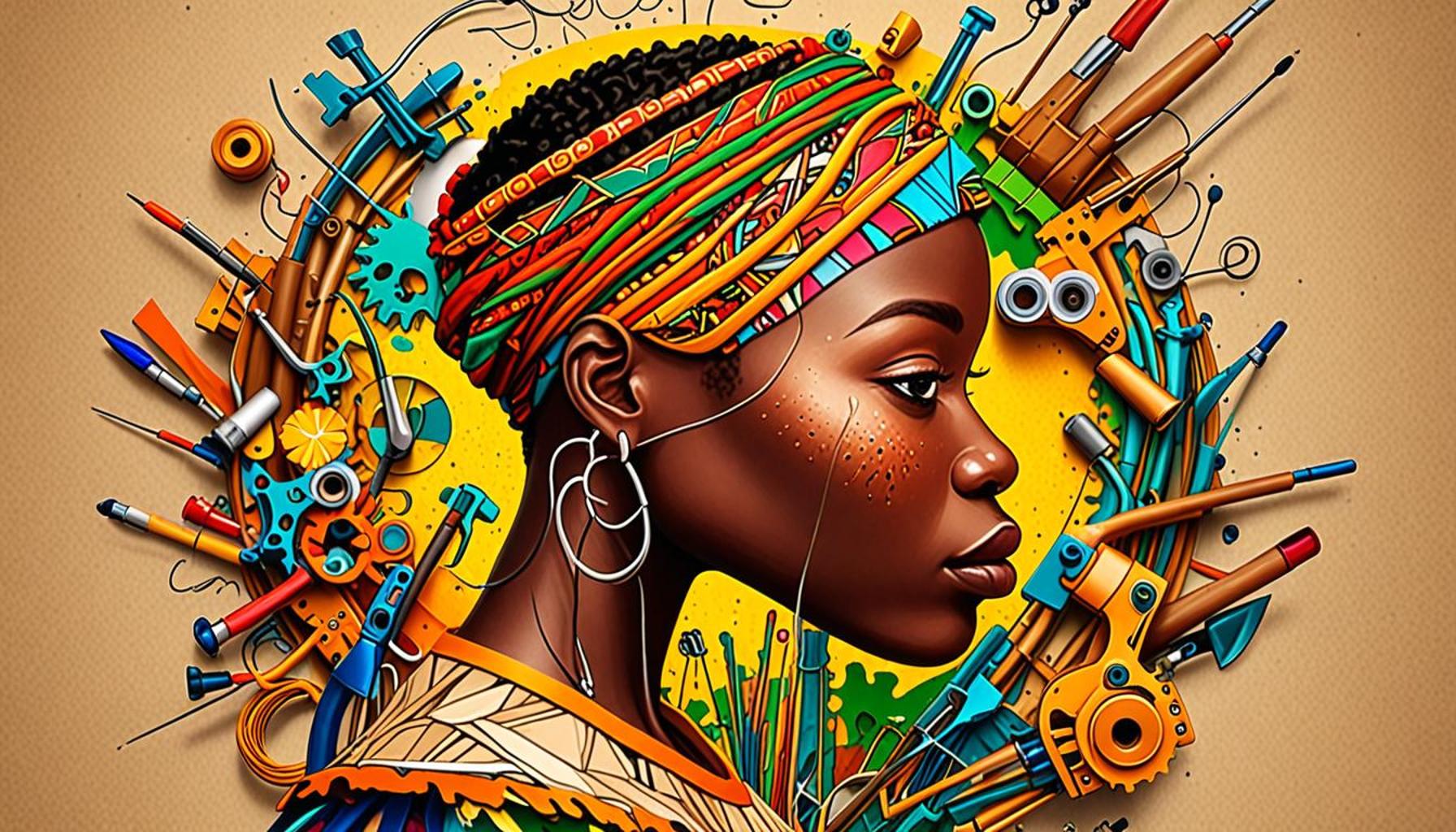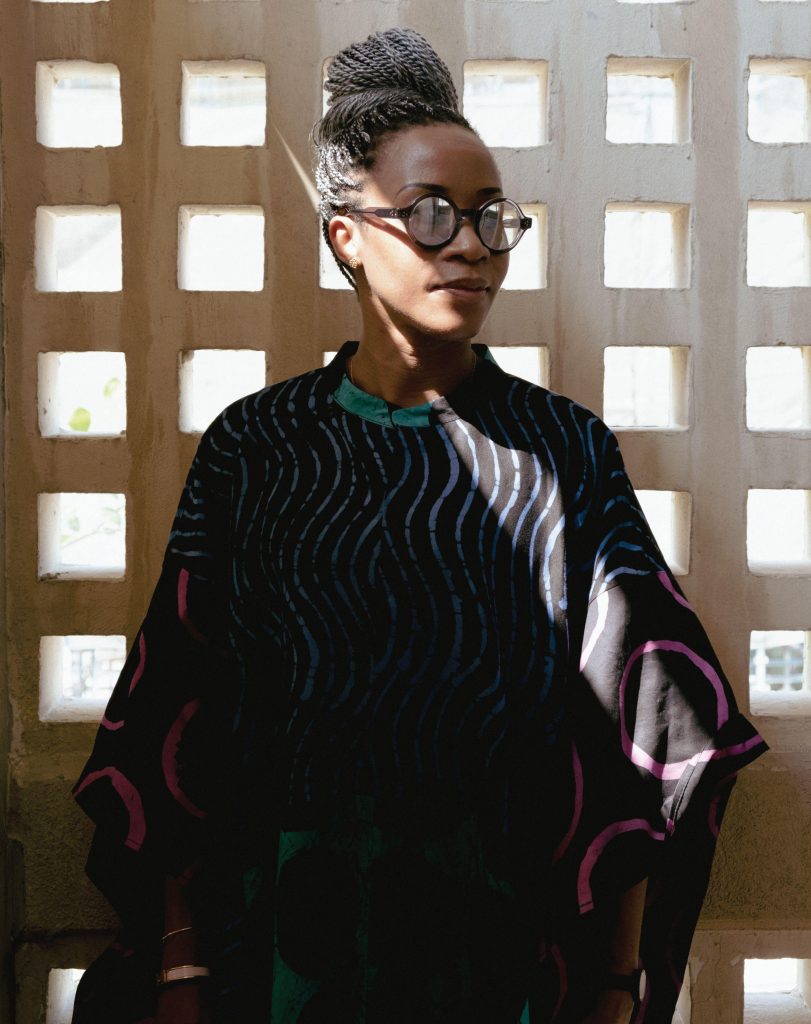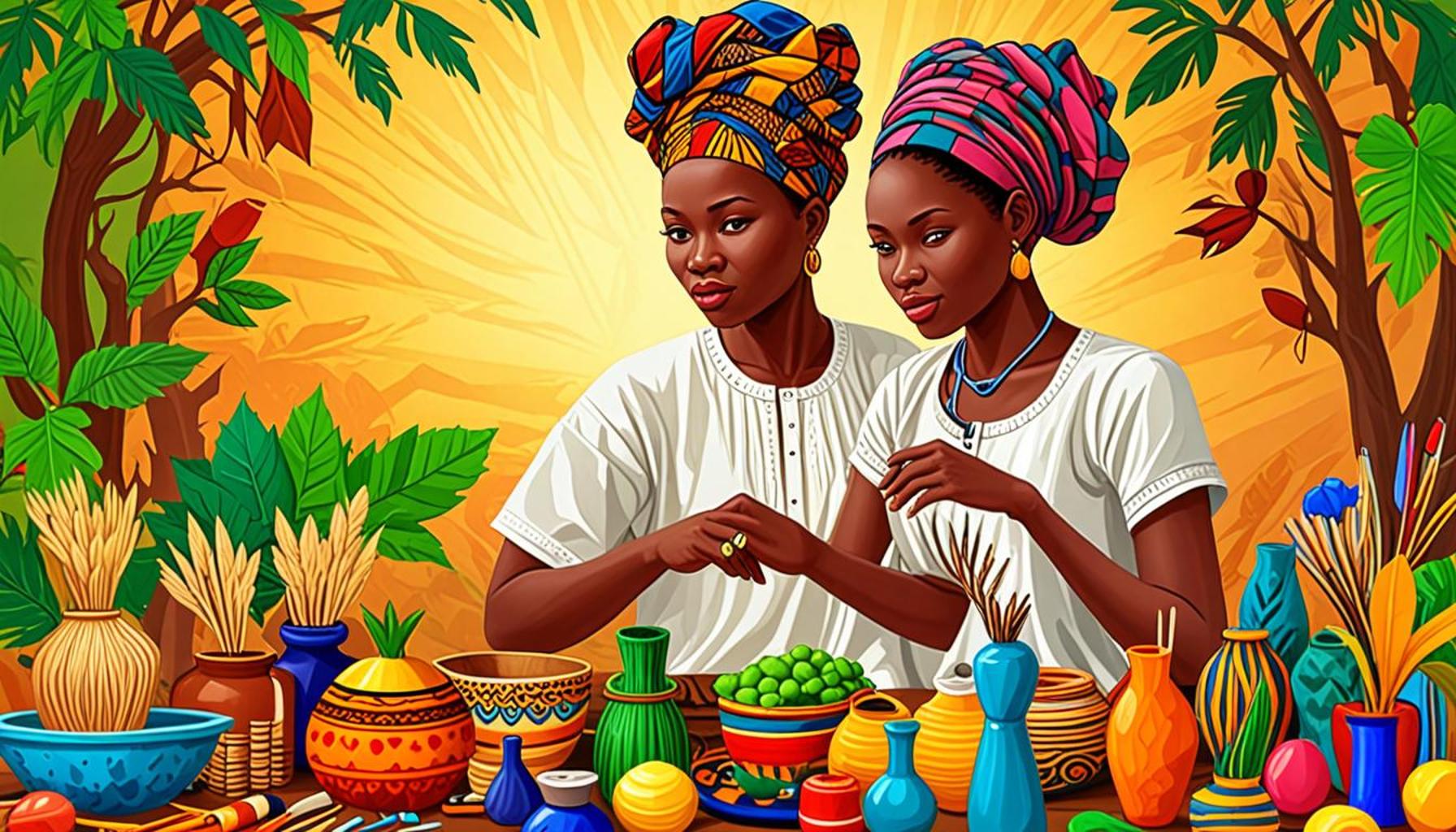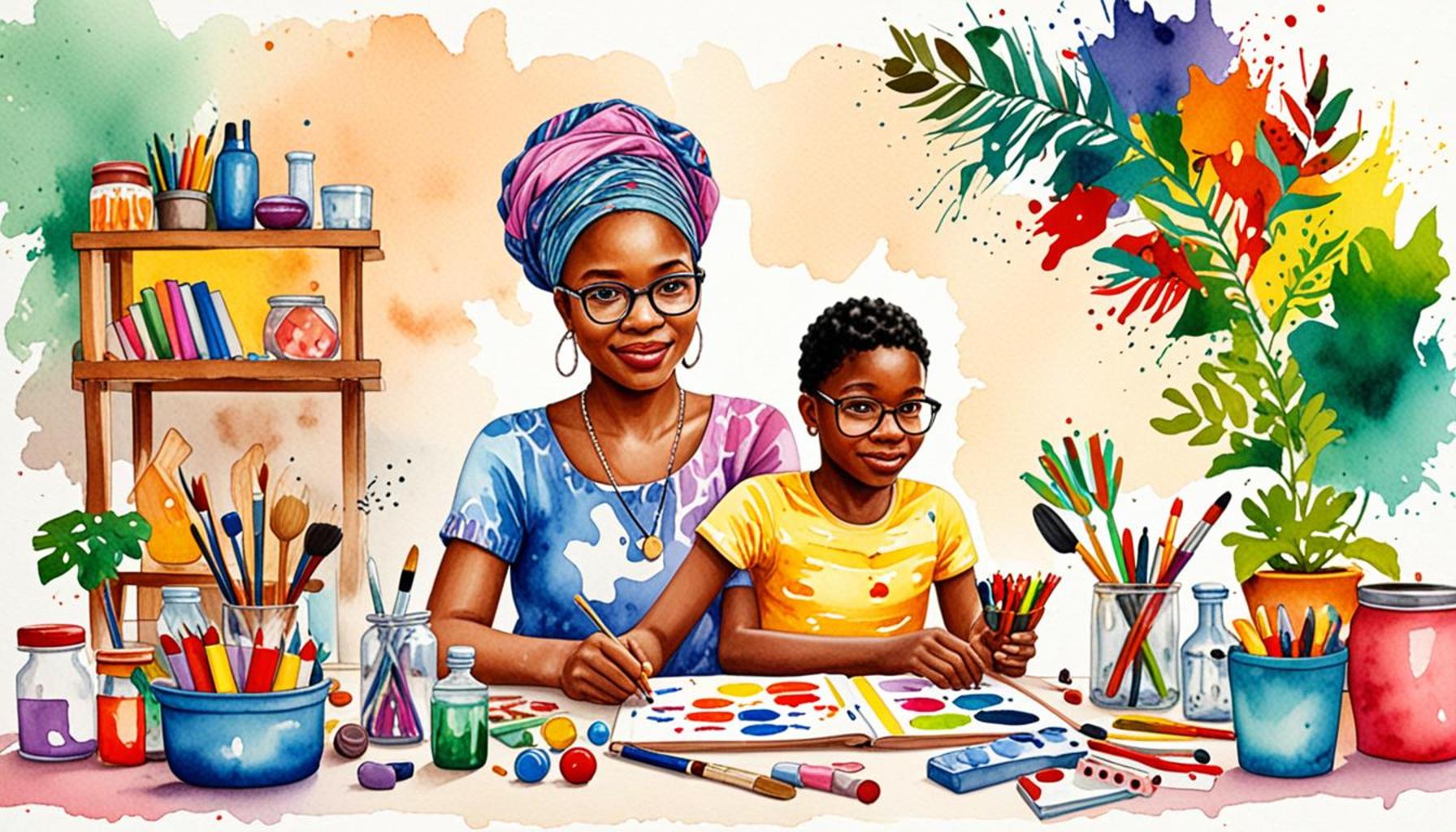Innovations in Craft Techniques: The Use of Alternative and Sustainable Materials in Nigeria

Crafting a Sustainable Future
In recent years, Nigeria has witnessed a remarkable shift in traditional craft techniques. Artisans across the country are embracing innovative methods that prioritize the use of alternative and sustainable materials. This movement not only preserves the rich cultural heritage but also promotes environmental consciousness. By integrating traditional crafting skills with modern sustainability practices, Nigerian artisans are not only telling stories through their creations but are also addressing contemporary ecological challenges.
- Local artisans are repurposing materials such as:
- Recycled plastics: Craftspeople are creating intricate beadwork and decorative items from discarded plastic bottles, turning what would be waste into stunning pieces of art.
- Natural fibers: Many artisans utilize jute, hemp, and various plant fibers to craft textiles and baskets. This approach not only provides economic opportunities for local farmers but also ensures biodegradable products that are gentle on the Earth.
- Organic dyes: By using plants like indigo and turmeric, artisans create vibrant colors for their fabrics, which not only enhances the aesthetics of their work but also eliminates toxic chemicals commonly found in synthetic dyes.
The rise of these sustainable practices can be attributed to several factors, including:
- The increasing demand for eco-friendly products: As global consumers grow more conscious about their environmental impact, the market for sustainable and ethically made crafts has expanded significantly.
- Government initiatives promoting sustainability: Efforts by the Nigerian government and non-profit organizations to support local artisans in adopting eco-friendly methods have created a framework for growth and innovation in this sector.
- Consumer awareness around environmental issues: A more informed public acknowledges the urgency of environmental conservation, which in turn influences purchasing decisions and encourages artisans to adopt greener practices.
This burgeoning trend not only fosters creativity but also paves the way for economic opportunities. By utilizing locally sourced materials, artisans reduce costs and minimize their carbon footprint. The focus on sustainability enhances the appeal of Nigerian crafts in the global market, fostering a unique blend of cultural representation and responsible consumption.
As the world shifts towards a more sustainable future, the reclaiming of indigenous practices paired with modern innovations places Nigeria at the forefront of a craft revolution. Dive deep into the vibrant landscape where tradition meets sustainability, and discover how Nigerian craftsmen are leading this exciting new wave. With the creative blending of their heritage and the application of sustainable techniques, these artisans are not just building a business; they are building a narrative that respects the past while shaping a sustainable future for generations to come.
CHECK OUT: Click here to explore more

Rediscovering Materials: A Closer Look at Sustainable Choices
The transition towards sustainable crafting in Nigeria is not just about the materials chosen; it reflects a profound understanding of local resources and cultural significance. As artisans explore alternative materials, they forge new paths that demonstrate creativity while preserving the rich tapestry of Nigerian heritage. This journey is intricate and diverse, spanning various regions and cultures, each with its unique contributions to sustainable craftsmanship.
One notable innovation is the use of recycled plastics. In cities like Lagos, where waste management poses significant challenges, artisans have responded by transforming discarded plastics into beautiful, functional art pieces. The creation of colorful beadwork and decorative objects does not only reduce waste but also provides an opportunity for financial empowerment. By producing goods from materials that would otherwise clutter the environment, artisans are helping to raise awareness about the importance of recycling.
Equally important is the resurgence of natural fibers. In northern Nigeria, weavers have started integrating jute and hemp into their traditional practices. These fibers, sourced from local plants, add elegance to their products while maintaining biodegradability. This shift is not merely practical; it also supports local farmers who cultivate these plants, contributing to an economically sustainable cycle that benefits the community. Artisans are also blending these natural fibers with innovative techniques, creating items that resonate with both functionality and artistry.
Furthermore, the employment of organic dyes marks a significant advancement in textile crafts. The use of indigenous plants like indigo, which has a long-standing history in southwestern Nigeria, showcases the symbiotic relationship between nature and craftsmanship. Artisans engaging in this practice are not only producing vibrant textiles free from harmful chemicals but are also reviving traditional knowledge that celebrates their heritage. The resulting fabrics tell stories as rich as the dyes used, making each piece unique and culturally significant.
As this movement gains momentum, it’s essential to recognize several driving factors behind the adoption of these sustainable practices:
- Economic viability: The cost of sourcing local, sustainable materials is often lower than importing synthetic alternatives, creating a viable business model for artisans.
- Cultural revival: The emphasis on traditional techniques and materials helps preserve local customs, fostering a sense of pride and identity among communities.
- Community collaboration: Many artisans work together, sharing techniques and resources, which enhances innovation and strengthens community ties.
The integration of sustainable materials into craft techniques is reshaping Nigeria’s artisan landscape. As artisans innovate, they embrace both their cultural roots and their responsibility to the environment. This evolving narrative not only captivates the attention of domestic audiences but also attracts international interest, positioning Nigerian crafts as symbols of creativity and consciousness in the global market. The commitment to innovative craftsmanship continues to enrich the lives of artisans, their communities, and their customers, ultimately crafting a brighter and more sustainable future for Nigeria.
| Advantages | Description |
|---|---|
| Eco-Friendly Practices | Innovative artisans are increasingly using sustainable materials such as bamboo, recycled plastics, and organic fabrics, reducing environmental impact. |
| Cultural Preservation | The integration of traditional methods with modern sustainable practices helps in the preservation of cultural heritage while adapting to contemporary market demands. |
| Economic Opportunities | Utilizing alternative materials opens new market opportunities for artisans and supports local economies through sustainable craftsmanship. |
The focus on innovative craft techniques in Nigeria highlights a growing trend towards integrating sustainability into cultural practices. Artisans are not only reviving traditional craft forms but are also finding ways to innovate using materials that serve both aesthetic and environmental purposes. By embracing alternative materials, such as natural fibers and repurposed items, creators are able to provide unique products that appeal to eco-conscious consumers. This not only enriches the artisan’s craft but also fosters a deeper appreciation for Nigeria’s rich cultural narrative and future growth in sustainable development. As interest continues to grow, the narratives surrounding these practices offer invaluable insights into both community identity and resilience in adapting to a rapidly changing world.
CHECK OUT: Click here to explore more
Cultural Narratives Shaped by Sustainability
The integration of sustainable materials is not merely about aesthetics; it is a revival of cultural narratives that resonate deeply within Nigerian societies. Each region contributes distinctive practices that highlight local traditions while embracing modern sustainability trends. For instance, the vibrant wood carving tradition in the southwest has seen artisans move towards using sustainably harvested wood, such as mahogany and iroko, which are known for their durability and beauty. By ensuring these materials are gathered responsibly, artisans not only honor their craft but also maintain the ecological balance in forests.
In addition, several artisans are adopting biodegradable resins to sculpt contemporary pieces that highlight the beauty of nature rather than exploit it. This innovation draws from traditional practices while addressing the pressing environmental issues stemming from plastic pollution. Artisans are collaborating with local environmental NGOs to ensure their sourcing is ethical, thus establishing a chain of responsibility that strengthens both the craft and the community.
A remarkable example of this approach is found in the work of contemporary ceramic artists within the Jos Plateau region. They have begun to incorporate locally sourced materials such as clay and ashes, creating unique pottery that tells stories of the land and its people. The use of eco-friendly glazes, made from natural minerals, enhances their creations and appeals to environmentally conscious consumers eager to support sustainable practices.
Moreover, there’s a growing trend among artisans to harness upcycling techniques, where old textiles and discarded fabrics are repurposed into stunning new products. This innovative practice not only reduces waste but also celebrates the concept of remaking and reinvesting in what already exists. For example, in the bustling markets of Onitsha, tailors are transforming old shirt remnants into fashionable bags and accessories, showcasing ingenuity while providing affordable fashion options to a generation that values sustainability.
The rise of community workshops is pivotal in this transformation, as these spaces facilitate knowledge sharing and encourage young artisans to explore sustainable materials. Artisans like Aminat Adamu, who leads a workshop in Kaduna, emphasizes teaching traditional techniques alongside sustainable practices to the next generation, ensuring the legacy of craftsmanship is preserved and revitalized through a conscious lens.
- Awareness and Education: Many artisans are engaging with local schools and community organizations, raising awareness about the importance of using sustainable materials and the role of traditional crafts in ecological preservation.
- Market Opportunities: The international demand for sustainable crafts has opened new markets for Nigerian artisans, leading to collaborations with global brands that value ecological responsibility.
- Policy Support: Government initiatives aimed at supporting artisan communities are facilitating access to training and resources, further promoting the use of sustainable practices in crafting.
As these practices evolve, the narrative around Nigerian craftsmanship continues to enrich itself. Sustainable materials hold the potential to become a cornerstone of Nigeria’s artisanal identity as more artisans embrace innovation without severing ties with their roots. The dialogue between tradition and modernity is not only shaping the craft industry but also making a compelling statement about what Nigeria stands for in the global arena of sustainable art and design.
YOU MAY ALSO LIKE: Read read another article
Embracing a Sustainable Craft Future
The innovations in craft techniques within Nigeria signify a pivotal transformation in the way artisans approach their work, blending alternative and sustainable materials with traditional practices. This movement not only promotes ecological sustainability but also enriches cultural expressions, allowing artisans to tell their stories while respecting the environment. As seen through the incorporation of responsibly sourced wood, biodegradable resins, and upcycled textiles, there is a clear commitment to preserving Nigeria’s rich heritage while responding to modern challenges.
Furthermore, the rise of community workshops fosters an environment of collaboration and knowledge-sharing, ensuring that the legacy of craftsmanship is passed down to future generations. With increased awareness of sustainability among artisans and consumers alike, there is a growing market for eco-friendly crafts that resonate with ethical consumerism. This shift opens doors to new opportunities for artisans, enhancing their livelihoods while promoting environmentally conscious practices.
As Nigeria continues to navigate its path in the global sustainable art and design landscape, it becomes evident that the fusion of innovation and tradition will play a crucial role in shaping the industry. The commitment to using sustainable materials not only speaks to the artisans’ creativity but also embodies a broader movement toward ecological preservation and cultural appreciation. Through these efforts, Nigeria’s craft sector stands poised to redefine what it means to honor the past while embracing a sustainable future, making it an essential player on the world stage.


